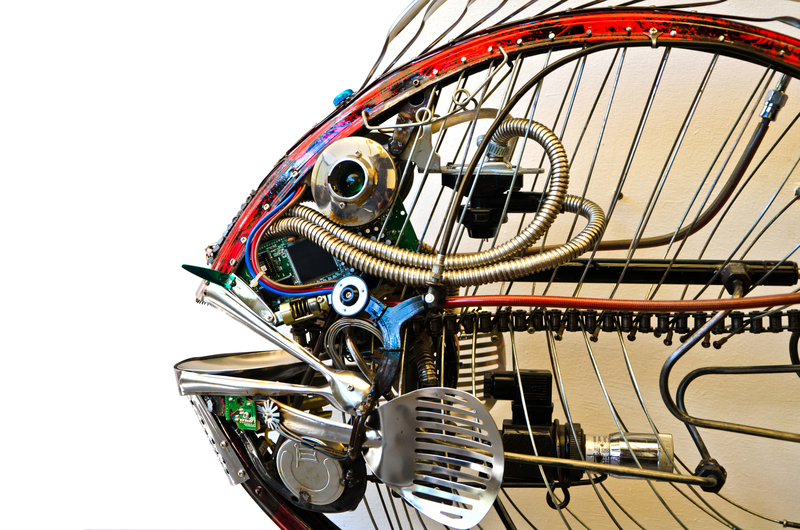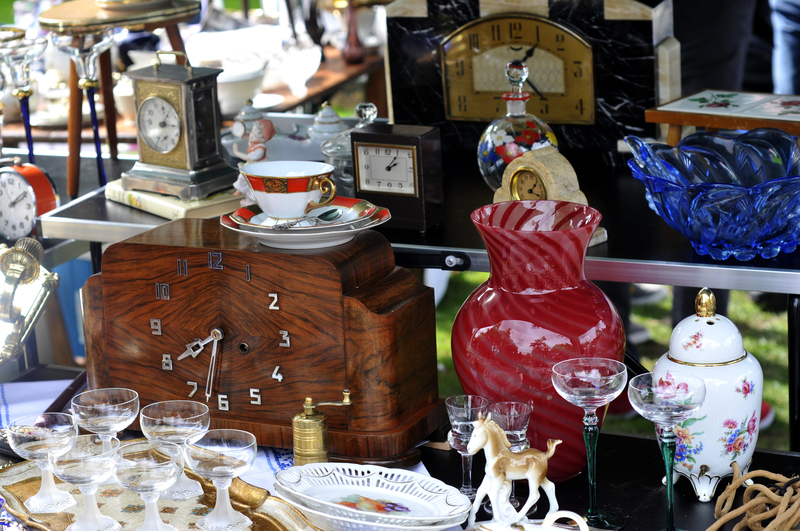Giving Broken Items a Second Chance Through Imaginative Repurposing
In today's world saturated with disposable consumer goods, the art of giving broken items a second chance through imaginative repurposing is rapidly gaining momentum. As environmental consciousness grows, people are increasingly seeking creative uses for objects that would otherwise end up in landfills. Through a combination of resourcefulness, sustainability, and artful repurposing, individuals and communities are discovering the immense value and beauty hidden within objects considered obsolete or broken.
Understanding Repurposing: More Than Just Recycling
Repurposing is the practice of taking broken or discarded items and transforming them into new, useful, or decorative objects. Unlike traditional recycling, which often involves breaking materials down to their base components, imaginative repurposing leverages the existing shape, structure, or features of an item.
- Recycling: Changes the material at a molecular level (e.g., melting plastic or glass).
- Repurposing: Finds new functions for items in their current form with modifications.
- Upcycling: Similar to repurposing but usually focuses on adding value or improving the function or appearance.

Why Give Broken Items a Second Life?
Environmental Impact
By giving broken items a second life, we can significantly reduce the amount of waste entering landfills. According to the Environmental Protection Agency (EPA), Americans generate over 292 million tons of waste each year, much of which can be repurposed or upcycled. By rescuing these items, we not only save space in our landfills but also conserve the energy and resources required to process new raw materials.
Financial and Personal Benefits
- Cost Savings: Repurposing can save money you would otherwise have spent on replacements or new storage, decor, or furniture.
- Creativity and Fulfillment: There's a unique satisfaction in giving a seemingly useless object a new and functional purpose.
- Customization: Repurposed items often become one-of-a-kind pieces tailored to your individual taste and needs.
Community and Charity
Imaginative repurposing projects can foster community spirit and collaboration. Neighborhood workshops and charity organizations often host groups to find new solutions for broken items, making a positive social impact.
Imaginative Ideas for Repurposing Broken Items
The joy of giving broken things a second chance lies in the endless potential for creativity. Here are some innovative ideas to inspire your next project:
Transforming Broken Furniture
- Broken Chairs: Repurpose a chair missing a leg into a whimsical garden planter or a pet bed. Keep the backrest as a unique photo frame.
- Old Dressers: Convert busted drawers into hanging wall shelves or under-bed organizers. Use the dresser carcass as a kitchen island.
- Damaged Tables: Give new life as a bench or a rustic plant stand by removing legs or adding embellishments.
Creative Solutions for Broken Household Items
- Cracked Mugs and Cups: Use them as quirky planters, pen holders, or even candle molds.
- Leaky Buckets: Drill additional holes for optimal drainage and repurpose into flower pots.
- Torn Clothing: Upcycle fabric into patchwork quilts, reusable shopping bags, or even braided rugs.
Repurposing Broken Electronics
- Old Computer Monitors: Turn screens into fish tanks, pet enclosures, or retro photo frames.
- Defunct Keyboards: Individual keys make great buttons for DIY art projects, jewelry, or custom keychains.
- Worn-out Smartphones: Convert them into dedicated smart home controllers, security monitors, or digital photo frames.
Outdoor Repurposing Projects
- Bicycle Wheels: Adapt into wall art or garden trellises for climbing plants.
- Bathtub Planters: Reimagine old bathtubs as raised garden beds for flowers or vegetables.
- Broken Tools: Handles of rakes, shovels, and brooms can be joined together to create rustic coat racks or garden borders.
Turning Broken Glass and Ceramics into Art
- Shattered Plates and Tile: Use pieces for vibrant mosaic stepping stones, mirrors, or picture frames.
- Cracked Vases: Repurpose as holders for paintbrushes, makeup brushes, or kitchen utensils.
- Chipped Glassware: Smooth edges and use as tealight candle holders or unique drinking vessels for plants.
Steps to Start Your Own Imaginative Repurposing Project
- Assess the Item: Determine what's broken and what can be salvaged. Sometimes a minor fix can make a major difference.
- Research Inspiration: Browse websites, social media, and online communities like Pinterest or Instagram for repurposing ideas tailored to your item.
- Gather Materials: Collect any supplementary materials you might need, such as glue, paint, brackets, or tools.
- Plan Your Design: Sketch out or write down your intended repurposed item. Consider both aesthetics and function.
- Take Safety Precautions: Use gloves, safety glasses, or masks as appropriate.
- Execute the Project: Start slow and be prepared to adapt your idea as you discover new challenges or inspirations.
- Showcase or Share: Share your repurposed creation with friends, family, or online communities to inspire others.
Tools and Techniques for Successful Upcycling
The right tools can make the repurposing process easier and safer. Here are some essentials:
- Basic Hand Tools: Hammers, screwdrivers, pliers, and saws.
- Power Tools: Drills, sanders, and jigsaws for more advanced projects.
- Safety Gear: Gloves, goggles, and dust masks.
- Adhesives and Fasteners: Superglue, epoxy resin, screws, and nails.
- Finishing Materials: Paints, stains, or sealers to improve durability and appearance.
Popular Upcycling Techniques
- Decoupage: Applying decorative paper to surfaces for a new look.
- Mosaics: Using broken pieces to create intricate patterns.
- Painting & Stenciling: Transform surfaces with fresh colors or designs.
- Sectional Assembly: Combine parts of multiple broken items into a single new creation.
Inspiring Success Stories in Imaginative Repurposing
Around the globe, both individuals and businesses are championing the movement of giving broken items a second chance. Their stories motivate countless others to reimagine the lifecycle of objects in their homes.
From Waste to Wonder: Creative Entrepreneurs
- Furniture Designers: Several companies specialize in salvaging old wood or metal from ruined buildings, turning them into stunning, high-end tables and chairs.
- Artisans: Talented crafters transform broken jewelry into trendsetting accessories or statement wall art.
- Startups: Some startups reinvent old electronics as smart home devices or retro-themed desk organizers.
Community-Based Upcycling Projects
- Repair Cafes: Volunteer-driven pop-up workshops help communities fix or reimagine broken household items, teaching new skills in the process.
- School Projects: Educators use repurposing as a teaching tool, turning discarded materials into learning aids or garden installations.
- Charity Collaborations: Organizations collect broken donations, fix or repurpose them, and distribute to families in need.
Environmental Impact and the Circular Economy
Imaginative repurposing is a cornerstone of the circular economy--an economic system aimed at eliminating waste and keeping resources in use for as long as possible. Rather than following the traditional linear model of "take, make, dispose," the circular economy emphasizes reuse, repair, and repurposing.
- Reduces Resource Extraction: Less demand for new materials means fewer environmental disruptions like mining and deforestation.
- Saves Energy: Manufacturing new products usually requires more energy compared to repurposing what's already available.
- Decreases Pollution: Repurposing reduces incineration and landfill use, both of which can release harmful emissions.
How to Encourage Imaginative Repurposing in Everyday Life
- Change Your Mindset: View broken items as opportunities, not waste. Ask yourself, "What could this become?"
- Inform and Involve Others: Spread the word about the benefits of imaginative repurposing through social media or community events.
- Support Local Makers and Creators: Buy art, furniture, or accessories made from repurposed materials.
- Host Exchanges or Workshops: Offer to swap, donate, or collaborate on projects with friends or neighbors.
- Document Your Projects: Inspire others by sharing before-and-after photos, tips, and tutorials.

Common Mistakes to Avoid When Repurposing Broken Items
- Ignoring Safety Hazards: Ensure items are clean, free of harmful chemicals, and structurally sound for their new purpose.
- Overcomplicating Projects: Start with simple ideas before attempting complex transformations.
- Not Considering Functionality: Think about how your repurposed item will be used and if it suits your original intention.
- Forgetting Repairs: Some items may need minor repairs (e.g., sanding rough edges or sealing cracks) before safe repurposing.
- Disregarding Aesthetics: A few finishing touches like paint or varnish can dramatically enhance the appearance of any repurposed item.
Conclusion: Every Broken Item is a Story Waiting for a Second Chapter
The movement of giving broken items a second chance through imaginative repurposing is much more than a trendy DIY approach. It's a powerful solution to the pressing global issues of waste and unsustainable consumption. Every cracked dish, splintered piece of furniture, or obsolete gadget has the potential to become something beautiful, functional, or inspiring. As you embark on your own journey of transformation, remember--the only limits are your imagination and willingness to see new possibilities in the old.
By embracing creative repurposing, you not only enrich your living space but also contribute toward a healthier, more sustainable planet. Whether you're an experienced upcycler or just getting started, every broken item can become a springboard to innovation, expression, and positive change.